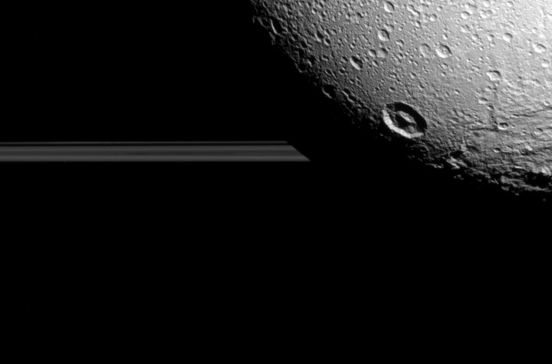-
Tips for becoming a good boxer - November 6, 2020
-
7 expert tips for making your hens night a memorable one - November 6, 2020
-
5 reasons to host your Christmas party on a cruise boat - November 6, 2020
-
What to do when you’re charged with a crime - November 6, 2020
-
Should you get one or multiple dogs? Here’s all you need to know - November 3, 2020
-
A Guide: How to Build Your Very Own Magic Mirror - February 14, 2019
-
Our Top Inspirational Baseball Stars - November 24, 2018
-
Five Tech Tools That Will Help You Turn Your Blog into a Business - November 24, 2018
-
How to Indulge on Vacation without Expanding Your Waist - November 9, 2018
-
5 Strategies for Businesses to Appeal to Today’s Increasingly Mobile-Crazed Customers - November 9, 2018
Cassini Probe Takes Breathtaking Final Look at Saturn’s Moon Dione
NASA’s Cassini spacecraft has been orbiting Saturn for the last 11 years taking what can only be described as some of the most stunning and humbling pictures of the planet and its 62 moons. But the mission is not over; Cassini is now heading over to fly past the moon Encedalus.
Advertisement
The other photograph [embedded below] was capture by Cassini looked down at a region near the day-night boundary.
With the use of the spacecraft’s wide-angle camera, images of Dione’s terrain were taken with the additional light from Saturnshine or the light reflected from Saturn.
According to Carolyn Porco of the Cassini team, “I am moved, as I know everyone else is, looking at these exquisite images of Dione’s surface and crescent, and knowing that they are the last we will see of this far-off world for a very long time to come”. “Right down to the last, Cassini has faithfully delivered another extraordinary set of riches”. It reached Saturn’s orbit in 2004, allowing astronomers a closer look at its many different moons. Its closest-ever Dione flyby came in December 2011 when it passed with 60 miles of the moon’s surface. The moon circles Saturn just under 3 Earth days.
As such, its camera was not in control of where the craft’s direction was pointed which means there was no certainty that it could capture Dione clearly. A record of impacts large and small is preserved in the moon’s ancient, icy surface.
After this flyby, Cassini will not anymore be making any close approaches to Dione.
“We had just enough time to snap a few images, giving us nice, high resolution looks at the surface”, said Tilmann Denk, a Cassini participating scientist at Freie University in Berlin. Because of the added light source, the images provided more detail in the moon’s shadows.
Cassini will also dive into the space between Saturn and its ring plane a number of times before its mission ends in about two years, NASA said. Researchers say that they will get a trove of data to determine what’s been happening beneath the surface.
Advertisement
Cassini will make only a handful of close flybys around Saturn’s large, icy moons this year.




























